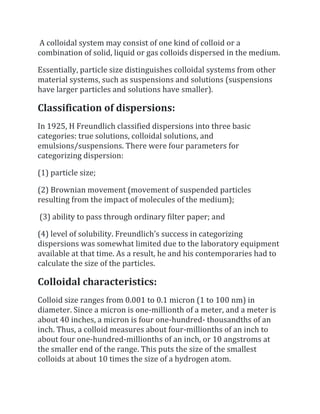Colloids are essential to life and are found in cells, blood, and body fluids. Colloidal science enhances understanding of colloids and their applications to human health. Colloids can be manufactured using grinding, wave action, liquid dispersion, chemical processes, or electrically, with electrical methods producing the best results. Properly prepared colloids do not require stabilizers and can remain suspended indefinitely, making them useful for health applications like nutrient delivery and tissue regeneration.














